Potash fertilizers: benefits and application features
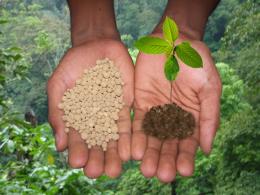
Every year, many gardeners and gardeners add various fertilizers. The components can be either organic or mineral. Potassium fertilizers are mineral fertilizers. It is important to know how to properly use this type of fertilizing for abundant fruiting.
Content:
Potash fertilizers: what is it?
Potash fertilizers are extracted from potash ores. Production is carried out in several ways. Potassium salts are mainly processed to produce fertilizers: carnelite, sylvinite, shenite, kainite, etc. Potassium is an integral component for plant development. Thanks to it, sugars are distributed throughout the tissues, the fruits are formed tasty and sweet.
Potassium fertilizers can be applied in various types soils. Loams and clay soils retain potassium well, and the most depleted soils are peat soils. It is important to know what signs indicate a lack of potassium in plants:
- The appearance of brown spots on the leaves
- Burn around the edges
- Poor flowering and fruiting
- Irregularly shaped leaves
- Lodging of plants
- Leaf wilt
If plants do not have enough potassium, then the buds are poorly formed, the fruits are small in size and quite few of them are formed.You can feed tomatoes, cucumbers, beets, cabbage, onions, carrots, raspberries, currants, apple trees, etc. with mineral potassium fertilizers. Flowers also need feeding.
Meaning and Benefits
If a plant receives a sufficient amount of potassium, it accelerates photosynthesis, increases enzymatic activity, and enhances cellular metabolism. In addition, plant resistance to pathogenic factors, diseases and pests is significantly increased. In young shoots the potassium concentration is several times higher than in mature shoots shoots. When applying potassium fertilizers, rapid adaptation to negative temperatures occurs.
This type of mineral fertilizer, when used correctly, promotes abundant fruiting and timely flowering, and also affects the appearance of the fruit. This element stabilizes metabolism and helps to better tolerate moisture. A lack of potassium in the soil prevents the conversion of monosaccharides into polysaccharides. Potassium slows down the rapid growth of fruits and their premature aging.
Types of potash fertilizers
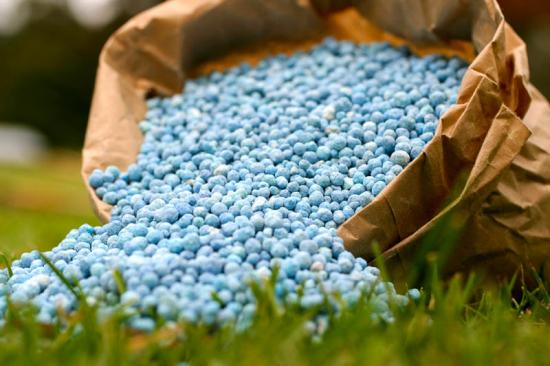
There are several types of potash fertilizers:
- Potassium chloride. The potassium content reaches about 60%. It is undesirable to use fertilizers to feed plants in protected soil, as the salt concentration may increase.
- Potassium sulfate. It is advisable to use for plants that do not tolerate chlorine. Can be used as fertilizer for plants grown in the greenhouse.
- Potassium salt. In addition to potassium, it contains chlorine and sodium. This type is not recommended for use on plants that are sensitive to chlorine content. Can be used for feeding beets, table and fodder root crops.
- Potash.It is characterized by increased hygroscopicity. Used for feeding potatoes.
Fertilizers are also obtained from industrial waste, but their potassium content is low. Complex fertilizers include potassium nitrate, nitrophosphate, ammophosphate, etc. The listed types of potassium fertilizers can be used for almost all vegetable crops and plants.
Potassium fertilizers provide the plant with the necessary nutrients. To obtain more effective results when growing vegetables, it is recommended to use it in combination with phosphorus or nitrogen fertilizers. In this case, the plants will receive balanced nutrition.
Rules of application

Fertilizers should be applied if the leaves of the plant have a grayish tint and the plant begins to lag behind in development. For a certain crop there is its own fertilizer rate. Potassium fertilizers can be applied before sowing, during sowing and after it. This fertilizer is often used in the fall. Over the winter, the negative effects of chlorine are neutralized.
It is important to correctly regulate the dose of fertilizing, taking into account not only the type of plant, but also the type of soil. It is recommended to apply small doses of fertilizer several times a season rather than a single large dose. For vegetable crops, potassium fertilizers should be applied throughout the development of the plant. It is necessary to prepare a weakly concentrated solution.
Garden plants are fed 2 times per season: during the period of growing green mass and during the fruiting period. For berries, fertilizing is applied regularly. Potatoes, tomatoes and peppers, unlike other plants, need this element in larger quantities.
For such vegetable crops, the dose is increased.If you apply fertilizer in the spring, then the amount of potassium in the fertilizer should exceed the nitrogen content, and when fertilizing in the fall - vice versa. Foliar feeding should be carried out using a solution of potassium sulfate. It is recommended to fertilize after rainfalls.
During this period, the concentration of potassium in the leaves decreases. An excess of potassium, as well as its deficiency, has a bad effect on the development of plants. Excess fertilizers It is especially dangerous if there is a lack of nitrogen and phosphorus. It should be remembered that a high potassium content in the soil inhibits the absorption of other useful components. It is necessary to observe the exact dose and norms of fertilizing.
Video about potash fertilizers:

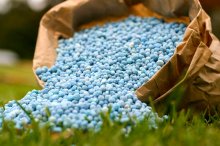
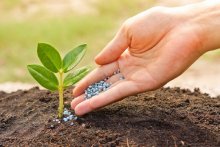
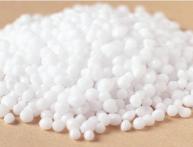
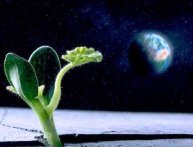
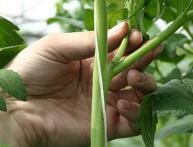
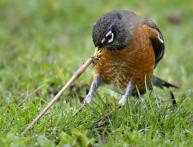
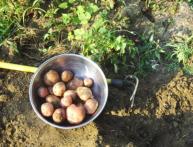
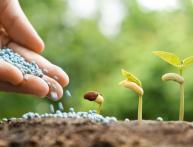
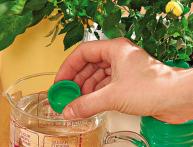

Comments
Potassium fertilizers are found in wood ash, which can also reduce the acidity of the soil to a neutral value. It is advisable to apply potassium fertilizers to the soil in the fall so that they are thoroughly dissolved before spring.